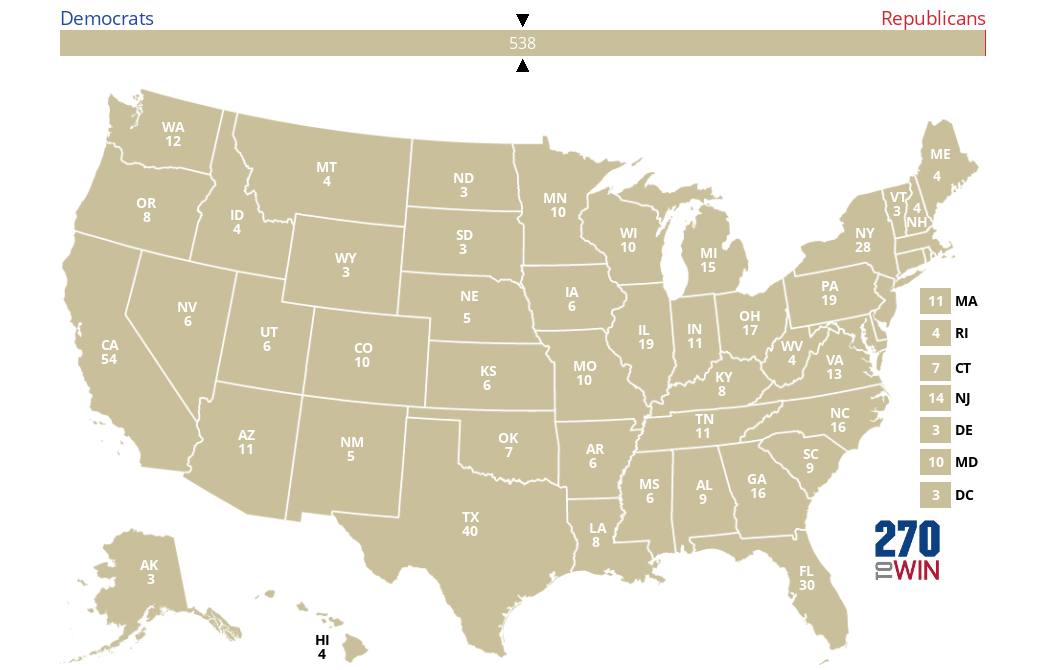
Erin Harris, Democracy Fellow (’25 Political Science and Communication Studies)
At the height of the 2024 Presidential Election, a review of how voting and elections work in the United States can help with easing some of the anxiety and tension of this time of year, as well as assist in staying as informed as possible. The election process in the United States includes the act of citizens casting their votes, those being counted for a popular vote total, and the entity of the Electoral College.
Today, casting votes in an election can look several different ways, including mail-in, absentee, in-person paper, and in-person electronic ballots. Whether a voter chooses to go to a polling location day-of, or mails in their ballot ahead of time, all methods are safe and secure when voting in primary and general elections. At the end of Election Day, mail-in and absentee ballots are verified via voter identification, where election officials double-check that every ballot’s signature/identification number matches what is on file for each voter (Bipartisan Policy Center, 2024). The security of mail-in/absentee ballots have also been enhanced with the implementation of the following measures: the tracking of every ballot that has been issued and returned, continuously updating voter registration lists to ensure that every ballot is sent to the correct voter, and balancing the number of ballots received against the number of ballot applications (Bipartisan Policy Center, 2024). Measures are also taken to ensure the security of voting at the polls. States have set requirements for poll workers, specifically training that they undergo before they can work the polls on Election Day (Pew Research Center, 2024).

Once votes are cast, they need to be counted for the popular vote. While each state has its own specific process, all are similar with electronic, paper, and mail-in ballot counting being completed at a central election/counting center (Campaign Legal Center, 2024). The first stage of the counting process is referred to as canvassing. Canvassing occurs when election officials do an unofficial count for the Congressional district in which they are in charge. This unofficial count is what America sees on the news and TV the night of and day after the election. One exception is provisional ballots. These get counted afterwards and separately from the rest so election officials can verify these voters are eligible to vote (Campaign Legal Center, 2024). The next step in the counting process is the recounting of the votes. Various states provide automatic and/or mandatory recounts for the top two candidates, specifically in a Presidential Election. Lastly, either a local board of elections, for local elections, or a state board of elections, for state and federal elections, formally approve the final and official results. This certification needs to occur by December 11th (Campaign Legal Center, 2024).
 While most elected officials are elected via the popular vote process, the President and the Vice President are chosen by electorates via the Electoral College. To win the Presidential Election, a candidate must receive a majority of the electoral vote–at least 270 votes (Time, 2024). While a candidate usually wins the electoral vote for their state if they win the popular vote, there is still a possibility of a presidential candidate not winning the Presidency even if they’ve won the popular vote–such as Hilary Clinton. The Electoral College is an entity that decides Presidential elections on a state-by-state basis. The number of votes given to each state in the Electoral College is based on the two Senators and how many Representatives they have (Time, 2024). For example, California has a higher number of Representatives than Virginia, so they’ll receive 54 electoral votes, whereas Virginia will only receive 13 (National Archives, 2024). The electorates will meet on December 17th to vote, after the certification of the popular vote. From there, the current Vice President counts the votes, and on January 6th, Congress will meet to officially recount the votes from the Electoral College, ending with the official announcement of the winner of the Presidential Election (Time, 2024).
While most elected officials are elected via the popular vote process, the President and the Vice President are chosen by electorates via the Electoral College. To win the Presidential Election, a candidate must receive a majority of the electoral vote–at least 270 votes (Time, 2024). While a candidate usually wins the electoral vote for their state if they win the popular vote, there is still a possibility of a presidential candidate not winning the Presidency even if they’ve won the popular vote–such as Hilary Clinton. The Electoral College is an entity that decides Presidential elections on a state-by-state basis. The number of votes given to each state in the Electoral College is based on the two Senators and how many Representatives they have (Time, 2024). For example, California has a higher number of Representatives than Virginia, so they’ll receive 54 electoral votes, whereas Virginia will only receive 13 (National Archives, 2024). The electorates will meet on December 17th to vote, after the certification of the popular vote. From there, the current Vice President counts the votes, and on January 6th, Congress will meet to officially recount the votes from the Electoral College, ending with the official announcement of the winner of the Presidential Election (Time, 2024).
Voters can check the status of their ballot via the citizens portals for their state, including: Virginia, Florida, Maryland, New Jersey, New York, North Carolina, and Pennsylvania.
Voters can also stay up to date with the election results, starting on November 5th, by going to the Virginia Department of Elections website.

Recent Comments